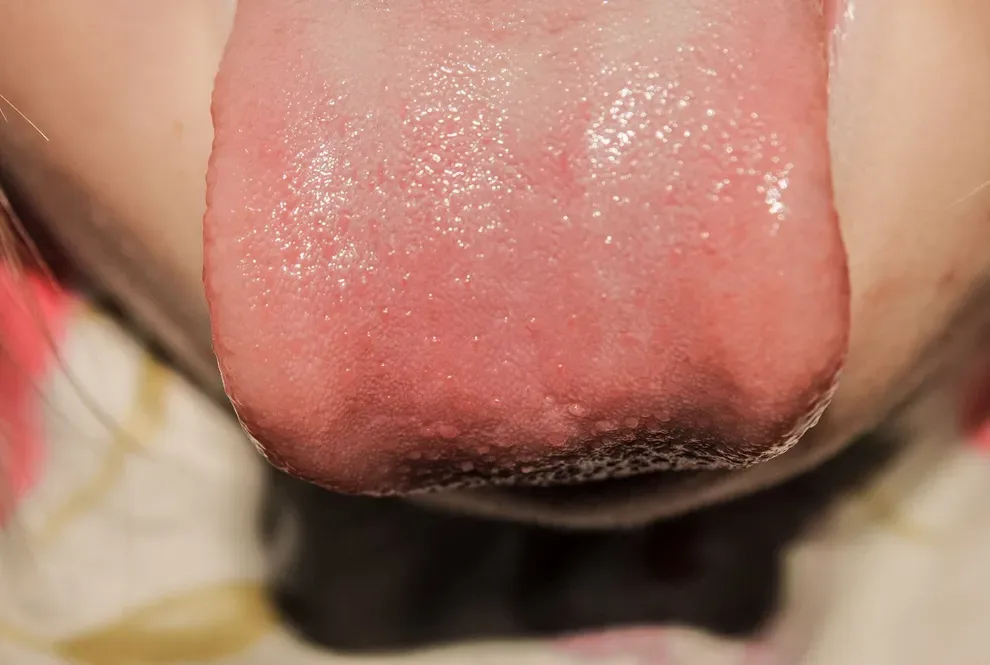Is It Normal to Have Bumps on My Tongue? (Home Treatments)

Table of Contents
- Causes for Bumps on the Tongue
- Home Remedies
- When to See a Doctor
It is normal to have bumps on your tongue.
The surface of your tongue is covered with small bumps called papillae that hold taste buds and temperature receptors. The majority of the time, these bumps are not noticeable, as they are mostly flat and pink in color. They can become inflamed or irritated with injury or illness.
There are a number of other reasons you can get bumps on your tongue, ranging from allergies to infection. Many of these conditions are very common and can be managed at home without the need for medical treatment.
At-home remedies can include diet changes and saltwater rinses. When tongue bumps are accompanied by fever or significant pain, you need to call your doctor.
Causes for Bumps on the Tongue
The papillae on your tongue can become irritated from acidic foods or sour candies. This can cause them to become raised, hard, and bumpy. This will generally clear up quickly if you stop eating these foods.
These are some of the other most common causes of bumps on the tongue:
This condition is temporary and generally goes away in a few days without treatment. It can trigger small white or red bumps that can cause some mild discomfort and pain on the tongue.
These bumps often appear like small pimples on your tongue. Other than the tingly, swollen, and painful feeling, there are not usually any other symptoms.
Trauma or injury to the tongue can cause it to appear bumpy. This can happen if you bite your tongue or burn it with hot liquid or food. Most of these injuries are not serious, and the swelling will go down in a few days.
These are one of the most common oral conditions that can cause small round or oval white or yellow sores to appear in the mouth and even on the tongue. Canker sores are small ulcers generally believed to be caused by an immune system response. They will usually clear up on their own in a week or so.
Often referred to as a cold sore or a fever blister, oral herpes can cause sores on the outside of the mouth and sometimes on the tongue. This is caused by the herpes simplex virus type 1 (HSV-1).
It is highly contagious during an outbreak and can also be accompanied by flu-like symptoms. The outbreaks can cause pain, and the blisters can last for a week or so.
Your mouth is full of bacteria that are normally healthy, but if your tongue becomes injured, the bacteria can cause an infection. This can cause your tongue to become swollen, painful, and bumpy. Infections can often require medical treatment and antibiotics to clear.
Food allergies and insensitivities can cause your tongue to get bumps and become swollen and irritated. If you experience an anaphylactic reaction (difficulty breathing, hives, or entire mouth swelling), seek immediate medical attention. Milder allergic reactions should clear up in a few days after removing the irritant.
This is a yeast infection that happens in the mouth and can cause redness, soreness, white patches, and bumps on your tongue. It is typically caused by a fungus and can generally be easily treated.
This is a benign growth that can occur on the tongue as a result of human papillomavirus (HPV). Squamous cell papilloma can be bumps that are generally painless and do not require treatment most of the time. They do sometimes need to be surgically removed.
This type of cancer is relatively rare, impacting just over 50,000 Americans in 2021. It does commonly impact the tongue, and tumors regularly form on the side of the tongue. If the bump is hard and painless, and lasts longer than a week or two, it should be medically evaluated.
Home Remedies
Depending on the type of bump on your tongue and how it is bothering you, there are several at-home treatments you can try. Most of the time, bumps on the back of the tongue are not serious or a medical emergency.
Here are some of the things you can try at home:
Gargle with a warm saltwater rinse.
Drink a lot of water to flush your system.
Mix a baking soda rinse with ¼ teaspoon of baking soda, 1 cup of warm water, and 1/8 teaspoon of salt, and gargle with it.
Minimize spicy, acidic, and citrus foods that can aggravate the bump.
Use an antiseptic mouthwash, but be careful with varieties that alcohol. These can be painful if you have an open sore.
Try a topical pain solution, canker sore medication, or numbing gel.
If you know the oral irritant, remove it.
Do not smoke or use tobacco products.
If you experience any bumps on the tongue followed by a fever, it is critical to see a doctor within 24 hours as this could be a symptom of a serious infection.
When to See a Doctor
If you experience a fever or additional symptoms in addition to the bump on your tongue, contact your doctor. Most of the time, bumps on the back of the tongue will clear up on their own and go away in a week or so. They are not usually cause for concern.
If the bump lasts longer than a week or keeps coming back, it is time to talk to your doctor.
